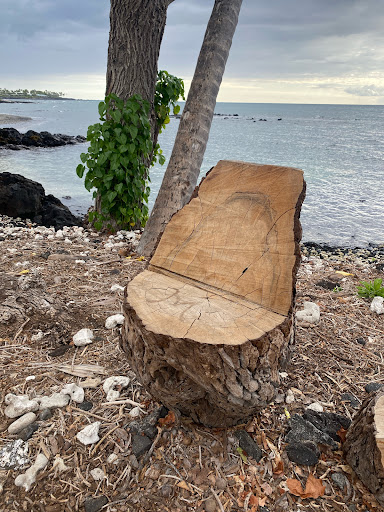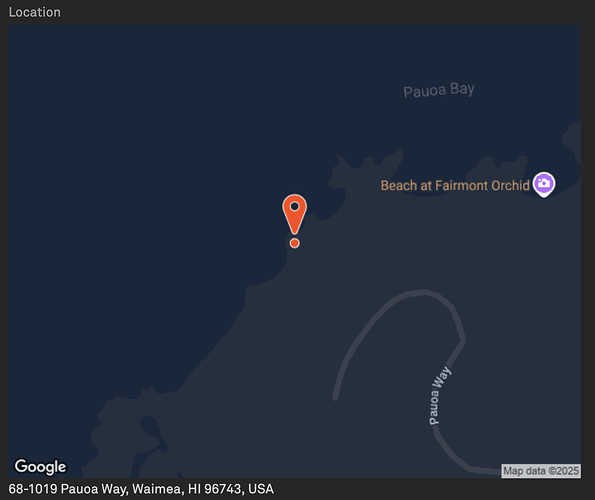First off, I realize that this submission is not exactly stellar. I recognize that this is just a tree stump crudely carved into a seat, and I wouldn’t be posting anything if this were located along a suburban sidewalk and it got rejected.
However, this object is located along a beautiful Hawaiian beachside trail (a great place to exercise), and the object itself is definitely both permanent and uniquely identifiable – see the M carved in the seat. I guarantee there are no other tree stump chairs located along this stretch of coast for several miles in either direction – I’ve walked quite a bit of this coastline myself. On top of that, there are also no signs or trail markers in the stretch where this chair is positioned between the two adjacent resorts.
My point here is that I think this particular example falls into the “technically eligible but too generic to be accepted on its own” category.
With that said, why is it that generic-looking, mass-produced trail markers are eligible per Niantic as great places to exercise, but other unique (though not otherwise stellar) points of interest along hiking trails aren’t eligible under that same criterion?
Personally, I would vote more generic-looking locations similar to this one (i.e. along trails, but not sidewalks) as a “yes” under exercise while reviewing – should I change that?
I suppose this particular case could come down to not putting enough emphasis on the exercise viewpoint in my supplimental info, but I would have thought “A great place to rest while out on a beach walk!” would get the point across.
Thoughts?
P.S. Regarding my appeal notes, the original reason for rejection simply stated that the submission violated the wayfarer criteria. I assume the “uniqueness / historical and cultural meaning” reason was added by the appeal reviewer.
Original Submission:
Wayspot Submission for Tree Stump Chair
Waimea HI
Appeal Not Accepted
2025-07-06
Appeal Notes
I’m not sure what part of the criteria this violates. It’s located about 10m from the shoreline, so it must be freely accessible to the public per Hawaii state law (this cannot be private property). The cursive M on the seat makes it distinct and uniquely identifiable. Additionally, the chair sits on the historic seaside Fishermen’s trail, making it a great place to rest while exercising.
Niantic Note
Thanks for the appeal, Explorer! The nomination in question does not meet the Wayfarer criteria as it is just a tree branch carved as a chair. If this assessment is not accurate, please resubmit the nomination with additional context. We recommend you review the Wayspot Criteria and Forum Criteria Discussions Library sections before submitting your next Wayspot contribution: https://niantic.helpshift.com/hc/en/21-wayfarer and Forum Criteria Discussions Library — Wayfarer Help Center
Reviewers provided these top reasons for not accepting this submission:
- The submission lacks uniqueness or historical and cultural meaning
Description
A seaside tree stump carved into a chair. I wonder what the “M” carved into the seat stands for?
Location
68-1019 Pauoa Way, Waimea, HI 96743, USA
Supplemental Information
Located along the seaside fishermen’s trail between the Mauna Lani and Fairmont Orchid resorts. A great place to rest while out on a beach walk!


